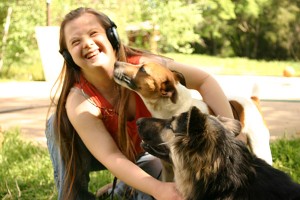 Dogs have been man’s companions for thousands of years. The brain of dogs is different from that of wolves and uniquely able to read humans. Some say dogs are here to teach humans unconditional love.
Dogs have been man’s companions for thousands of years. The brain of dogs is different from that of wolves and uniquely able to read humans. Some say dogs are here to teach humans unconditional love.
In mutual and symbiotic relationships, strong bonds can develop.
Don’t underestimate the intelligence of your companion, and always treat him with respect. Keep an eye out for “Man’s best Friend”posts.
History of Dogs and Human Civilization
Dogs are attuned to humans, their brains different from that of wolves.
The actual origin of the domestic dog is hard to pinpoint. All that is certain is that along with the camel and the horse, dogs originated in the Western Hemisphere about 15 million years ago, and from here migrated to the other continents.
We have a common history, mutually helping to survive. Archeological evidence indicates the domestic dog has been around at least 14,000 years BP (before present) and that domestication probably began in Europe and western Asia. However, “[t]he archaeological record cannot resolve whether domestic dogs originated from a single wolf population or arose from multiple populations at different times…circumstantial evidence suggest that dogs may have diverse origins”, according to Wayne (Vila et al.,1997).
Most dogs were used as working dogs in hunting, herding and guarding. In some places, dogs were kept for food.
It is at Natufian sites that some of the earliest archaeological evidence for the domestication of the dog is found. At the Natufian site of Ain Mallahain Israel, dated to 12 000 BP, the remains of an elderly human and a four-to-five-month-old puppy were found buried together. At another Natufian site at the cave of Hayonim, humans were found buried with two canids.
In the oldest story we have today, The Epic of Gilgamesh from ancient Sumeria (dated to 2150-2000 BCE) the goddess Innana has seven prized hunting dogs. In the famous Descent of Innana (a story considered older than and not a part of Gilgamesh) in which the goddess goes down into the underworld, her husband, Dumuzi, keeps domesticated dogs as part of his royal retinue.
“We even know many ancient Egyptian dog’s names from leather collars as well as stelae and reliefs. They included names such as Brave One, Reliable, Good Herdsman, North-Wind, Antelope and even “Useless”. Other names come from the dogs color, such as Blacky, while still other dogs were given numbers for names, such as “the Fifth”. Many of the names seem to represent endearment, while others convey merely the dogs abilities or capabilities.
What is certain is that humans have been living alongside some canid species for at least 12,000 years. During that time we have bred dogs of varied sizes and talents to suit our needs, including a need for undiluted devotion that makes the relationship between humans and dogs unique in the animal kingdom.
Man and dog share a special history. The domesticated dog (Canis familiaris) was created by our hunter-gatherer ancestors using artificial selection. They selected individuals from the ancestral wolves that probably accompanied these nomads in their search for prey.
As some human cultures became sedentary, farmers and townspeople bred dogs for ever more specialized duties, such as retrieving, shepherding and guarding. Early civilizations also tried their luck with other animals
source: the www.
This is an interesting related video